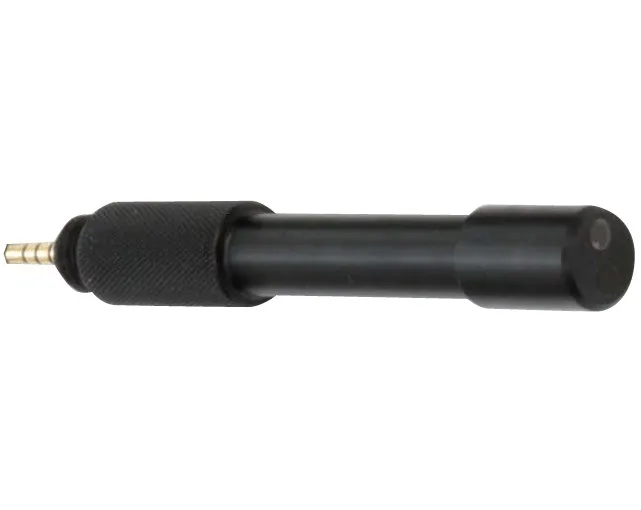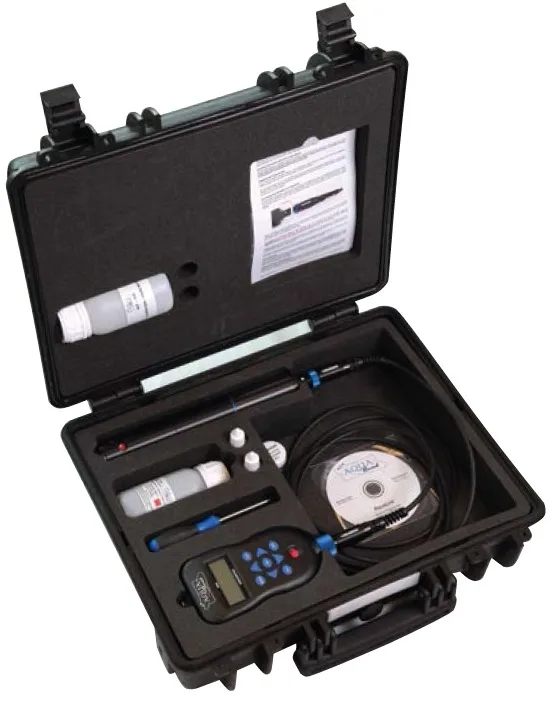Description
Turbidity is a key indicator of water quality, measuring the amount of solid matter suspended, rather than dissolved, in water. Think of it as how cloudy or clear the water appears – the cloudier it is, the higher its turbidity.
Why Does Turbidity Matter?
Monitoring turbidity levels is crucial for maintaining healthy aquatic environments.
- Temperature & Oxygen: Increased turbidity means more suspended particles, which absorb heat from the sun. This raises the water temperature. Warmer water holds less dissolved oxygen (DO), which is vital for aquatic life.
- Light Penetration: High turbidity also blocks sunlight from penetrating the water. This reduces photosynthesis, the process by which aquatic plants and algae produce oxygen, further depleting DO levels.
- Ecosystem Health: Ultimately, elevated turbidity can significantly harm the entire ecosystem within a body of water, impacting everything from fish to microscopic organisms.
- Pollution & Treatment Issues: Sudden changes in turbidity can act as an early warning system. They might indicate a new source of pollution entering a waterway or, in the case of drinking water, an issue within the treatment process.
How the turbidity sensor works
A turbidity sensor, or turbidimeter, operates by sending a light beam into the water being tested. Any suspended particles within the water will scatter this light. A dedicated light detector, strategically placed at a 90-degree angle to the light source, then measures the amount of light reflected back. The greater the amount of detected scattered light, the higher the concentration of particles in the water, allowing the sensor to accurately determine the particle density and thus the turbidity level.
To use Aquaread’s turbidity sensor, first install it into the AP-2000 probe, then perform a full calibration of the 0 and 1000 NTU calibration point. Once calibrated it’s good to go. Simply put the probe into the body of water, allow the reading to stabilise and take your measurement.
When to use the sensor
Turbidity is a widely monitored water quality parameter due to its ease of measurement and significant impact on aquatic ecosystems. It’s especially important to conduct turbidity monitoring when large-scale construction or building works are underway near open waterways. In these scenarios, a common practice involves:
- Baseline Monitoring: Monitoring turbidity for several weeks before construction begins. This helps establish a baseline level and understand natural fluctuations due to factors like rainfall.
- Ongoing Monitoring: Continuing monitoring during the building work and for a few weeks after completion.
Data collected from such studies can be submitted to regulatory bodies, like the Environment Agency, to demonstrate that your project has not negatively impacted the nearby water system.
2000-TURB Electrode
The 2000-TURB electrode is a turbidity sensor designed for connection with the AP-2000 water quality probe from Aquaread. It is designed to give a measure of suspended particles in a sample of water. It achieves this by emitting infra-red light into the sample and measuring the incident light scattered at right angles from the particles in the sample. The 2000-TURB probe is designed to work with the measurement chamber of the AP-2000 Probe and the initial factory calibration is done with this measurement chamber profile.
This electrode employs a Nephelometric technique in accordance with ISO 7027, which uses Formazin as a reference standard. The AP-2000 probe connects to the aquameter display, BlueLink Device or AquaLogger. These units show turbidity in Nephelometric Turbidity Units (NTU) which are nominally equivalent to Formazin Turbidity Units (FTU).



